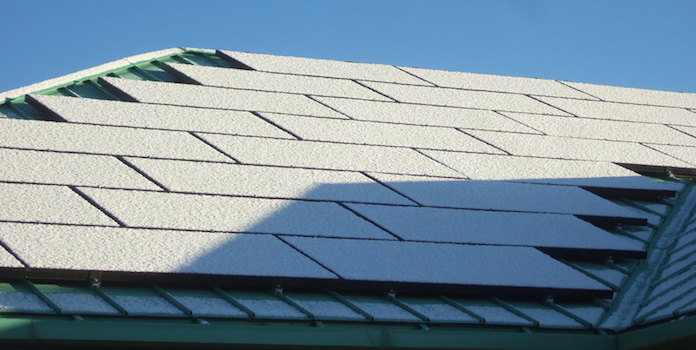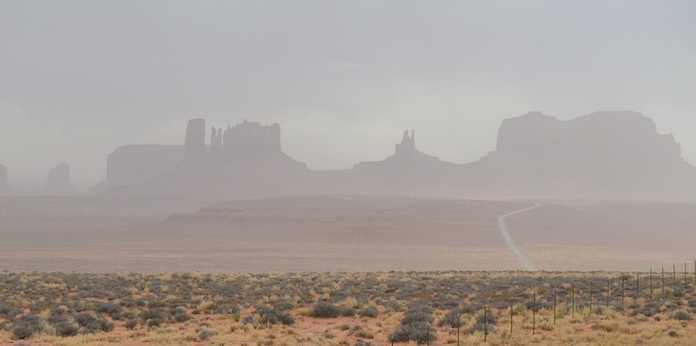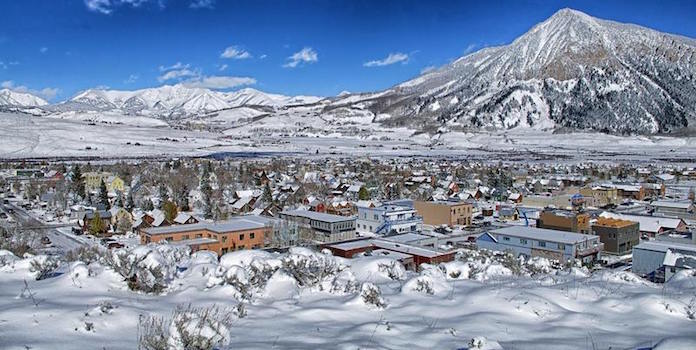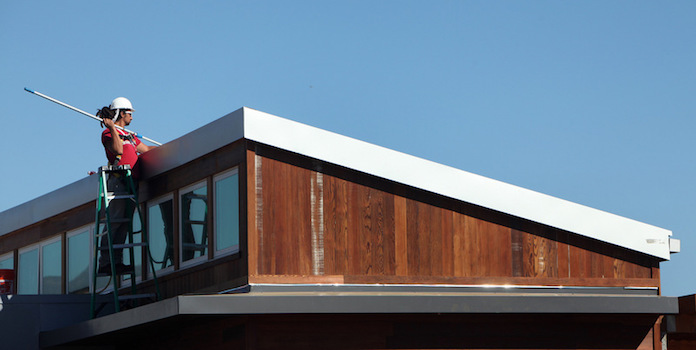Solar Panels Maintenance: Is It Really Necessary?
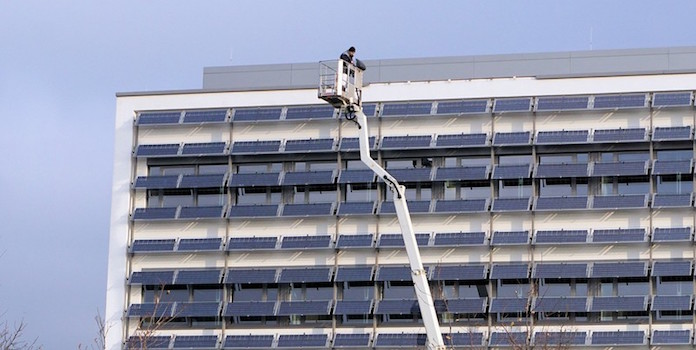
The Honest, No-Sales-Talk Answer: Is Solar Panel Maintenance Required?
There’s a lot of information out there on if, or how much, solar panels maintenance is needed. Some of this information is accurate and useful, but some is simply conjecture and product sales. How can you tell the difference between what’s necessary and what’s just a sales pitch? Let’s take a look.
We’ve often seen articles online or heard solar homeowners talk about how necessary it is to clean dirt, soil, and snow off solar panels so they can produce electricity at their maximum. We even saw one article claiming that if you never clean the dust and dirt off your panels, your production can drop by an enormous 25% (although that was on the website of a solar installation company that – surprise! – offers cleaning services).
First things first, know that solar panels are designed to be hands-off – they don’t need maintenance to function properly. They’re built to handle tough weather, snow, and dirt. Plug them in and forget about them. Unless something breaks, you are good to go.
Let’s look a bit further into solar panel maintenance to see what’s really necessary and what’s not (with proof!), as well as if it makes financial sense to purchase special tools or hire a company to clean your solar panels.
#1 Solar Panels Maintenance is Not Necessary
From a mechanical point of view, solar panels don’t require maintenance. They aren’t like cars, with all their moving parts and fluids that must be added after XX miles and oil after YY miles. Solar panels have no moving parts, so nothing needs to be serviced, oiled, or cleaned. Solar experts estimate solar panels to last an incredibly long time – around 30 years – and you can pretty much ignore them.
The biggest issue for solar panels – and one you can’t really change – is the environment. No matter what, the weather, sun exposure, and simply aging, will make any solar panel become less efficient over time, dropping energy production by 0.5% each year on average (known as solar panel degradation).
Extreme temperatures (and resulting temperature fluctuations) and heavy snow or wind loads can degrade a panel’s electrical connections and cause excessive wear, potentially increasing that degradation rate (p.14 of the link above). If you live in an area with frequently wide temperature fluctuations, heavy winds, or serious winter conditions, consider installing solar panels that are up to the task.
SolarWorld manufactures top-of-the-line solar panels right here in the USA. These panels are heavily engineered for extreme temperature fluctuations as well as heavy snow and wind loads.
SunPower, another premium solar company, claims the degradation rate on their panels is just 0.25% – half the typical rate!
If you’re concerned about extreme weather, take a look at these or similar manufacturers. However, these come at a cost much higher than standard panels (which do pretty well in most conditions), so carefully weigh the financials before moving forward.
If you live in an area with fairly consistent weather year round, you’re in a pretty good situation. There will be less wear and tear on your panels, (hopefully) leading to a longer-than-expected life.
To keep your solar panels functioning, there’s really not much you can do beyond choosing the best panels for your situation. Just plug them in and forget about them!
#2 What About Cleaning the Surface?
As we’ve seen above, there’s no real need (or method) to maintain the mechanical workings of solar panels – they’ll keep on producing electricity as long as they are plugged in and they see the sun. So, it’s OK to be hands off!
But that brings up another question: if we can’t maintain the inner workings of solar panels, can we optimize them from the outside?
If you live in a particularly dusty or snowy area, you might be wondering if you can clean the surface of your solar panels. And if so, is it worthwhile?
In this sense as well, solar panels generally don’t need a lot of maintenance. The glass on solar panels is very slippery – especially when wet – and is designed to shed dust during rain and snow when it begins to melt.
That’s great of course, but what if it doesn’t rain for a month? Is it worthwhile to get up on the roof or hire a contractor to come clean the panels? What if the snow is covering the panels for days on end? Is it worth the time or money to clean them? Do you get your money back in the extra electricity your newly-cleaned panels now produce?
To answer these questions, let’s look at two intense, but very different, situations for some insight: dusty Arizona and snowy Colorado.
#3 Soiling from Dust
We all have images of the desert: sand, sun, wind, and heat. You can probably imagine that dust would be a perennial and never-ending problem there. If anywhere in the US had a problem with dust on solar panels, it would be the southwest.
So is dust really a problem? Thankfully, numerous researchers and organizations have looked into this issue. In 2013, McCarthy Building Companies, which monitors several solar installations in the southwest, studied 20-year weather patterns as well as soiling on their own Arizona solar panel installations to estimate its long term effect. They published their findings, along with a review of previous studies, in Solar Pro magazine.
They found that in Arizona, dust causes an average drop of 0.1% in solar production for each day that it doesn’t rain. So after 5 days of no rain, an Arizona solar installation’s production would drop by 0.5%. After an entire month without rain, it would drop 3%.
At McCarthy’s solar installation in Bullhead City, AZ (next to the border to Nevada) they found that losses in production from soiling varied significantly from year to year, but were typically around just 3% to 6% annually. (This is a far cry from the 25% we read about on a solar installer’s site!) Once it rained – even just a ¼ inch – production losses dropped down again to 0%.
This means that, in one of the hottest and dustiest areas of the west with little rainfall, solar production drops just 4% on average each year (without manual cleaning).
To put this into perspective, 4% of the total production of an average-sized 5-kilowatt residential installation is equal to a loss of about 355 kilowatt-hours of electricity, or about $43.
The authors note that the loss increases if the installation is near cities, with all their dirty cars, airplanes, and everything else. But the fact remains that dust isn’t crippling your installation.
The moral of the story: for the vast majority of us, dust isn’t really an issue. Even in northern Arizona – renowned for its dry, hot deserts – homeowners only lose about forty bucks from soiling each year – the price of a meal at an average restaurant. However, if you want to learn how to clean your solar panels, or you’re just interested in what it entails, check out our post:
#4 Snow Cover
Further north, dust isn’t really the main issue for solar panels. Snow is Mother Nature’s solar panel annoyance. How much does snow affect an installation’s production? Let’s look at snowy Colorado for some insight.
Denver, Colorado sees an average of 16 days each year with snowfall greater than 1”. After a heavy snowfall, the sun usually comes out and is shining in full force within a day or two. These weather changes, coupled with the slippery design of solar panels, allows snow to slide easily off the panels. Most solar installations are snow free within 2 days or so.
How much does this affect production? Let’s do some quick math to find out! Let’s assume a worst-case scenario: that each of these 16 days is equally spread out, not overlapping each other at any point. This means that your solar panels are covered for 2 days each time it snows. So for 32 days out of the year, your solar panels aren’t producing power.
32 days is quite a lot! Let’s find out how much electricity that costs you.
Using the National Renewable Energy Lab’s PV Watts solar calculator, we find that a 5kW installation in Denver produces about 18 kWh per day from November to March (the snowiest months). Using this number, 32 snow-covered days without any energy production would mean a loss of 576 kWh each year. At the state average electricity price of $0.12 per kWh, this adds up to $70 a year.
So is removing the snow worth it? We’ll let you be the judge. How big of a deal is $70 to you? Keep in mind that – at least in Colorado – snow can come at any time from October to April. So you’d have to be ready to clean those panels off at any point during those 6 months. It’s not a ‘do it once and you’ll save $70’ kind of thing. You’ve got to get those panels clean as soon as the snow stops coming down. Obviously, if your installation is bigger than 5 kW, your losses are much higher, but so is the surface area you have to clean snow from!
If you live in a very snow-prone area where the white stuff simply lingers for weeks on end, removing the snow from your solar panels might make financial sense, as long as you have the time and willpower to go out and clean the panels. If you can’t or don’t want to get all that snow down, you may want to read our article on:
#5 Cleaning your Solar Panels – if you insist
Now, if you are one of those people who just has to keep their solar panels in top working order – and good on you if you are – you’ll save between $40 and $70 cleaning an average-sized solar installation. Do you still want to do it? Maybe seeing your investment sitting under a blanket of snow just irks the life out of you. We totally get it.
Thankfully, so does the solar industry. Manufacturers have created nifty tools to help you in your fight against the elements. Beyond simply hiring a company to clean your solar panels, which really doesn’t make financial sense unless they can come clean your solar panels regularly for less than $40 to $70 a year, here are a few highlights for you to consider:
- The LongArm Solar Panel Cleaning System Kit: This kit isn’t cheap, but it does come with brushes, cloths, squeegee, and of course a long-armed pole to remove dust from your solar panels. At this price, it would take the owner of our Arizona example above 6 ½ years to recoup the investment! And that’s just the equipment price; it doesn’t take into account your own time spent. Unless this kit is built like a tank and will last for years, it’s probably best to steer clear.
- Instead, you can go low-cost with a window washer/squeegee combo. At that price, you’re saving money after just 6 months. Better yet, buy a hose attachment and spray them down from your driveway. If the rain can clean off solar panels, so can your hose! You’ll be saving money and since you spent so little money on your cleaning tool, you won’t fret when you just don’t have the time to get out there and do it.
- The Sno-Pro: This neat little tool – composed of the same foam used in packaging materials – removes snow without scratching the solar panel glass. You can buy just the head so you can attach your own pole, or choose between poles ranging from 12 to 30 feet. Depending on your total cost, your snow-removal investment would pay off in about 2 years in places similar to Denver – assuming you were fairly religious about getting out there and actually removing the snow.
The solar roof rake and similar products are great if your panels are accessible from the ground. If your panels aren’t accessible safely from the ground, you’re running a real safety risk by getting up on your roof. Shingles – and especially solar panels – turn into slides when it’s snowy and icy. Trust us, $70 isn’t worth a trip to the hospital. Better to just let the snow be and hope for fast sunshine!
If you’re thinking about cleaning your solar panels, just take a step back and ask yourself if it’s worth your time and money. Chances are, you’ll spend more buying the products to clean them than you’ll save with the extra production.
For once in your life, you’ll be better financially just sitting back, relaxing, and letting nature take its course. Don’t focus on the tiny negative. Go grab yourself a big glass of iced tea, sit on your front porch, and revel in all the renewable, clean energy you are producing!
Do you clean your solar panels? What’s been your experience? Let us know in the comments!
Image Credit under CC License from Pixabay – 1, 3, 4 & Flickr – 2, 5

